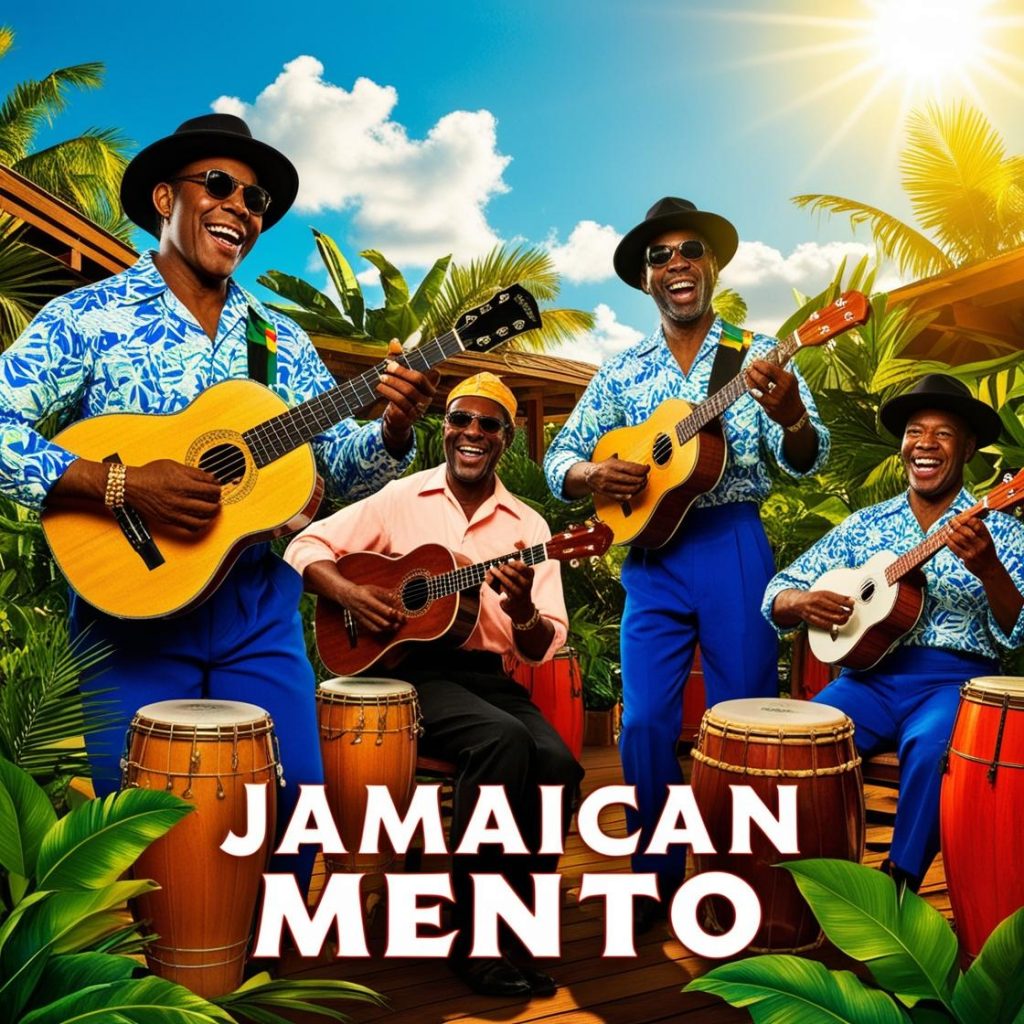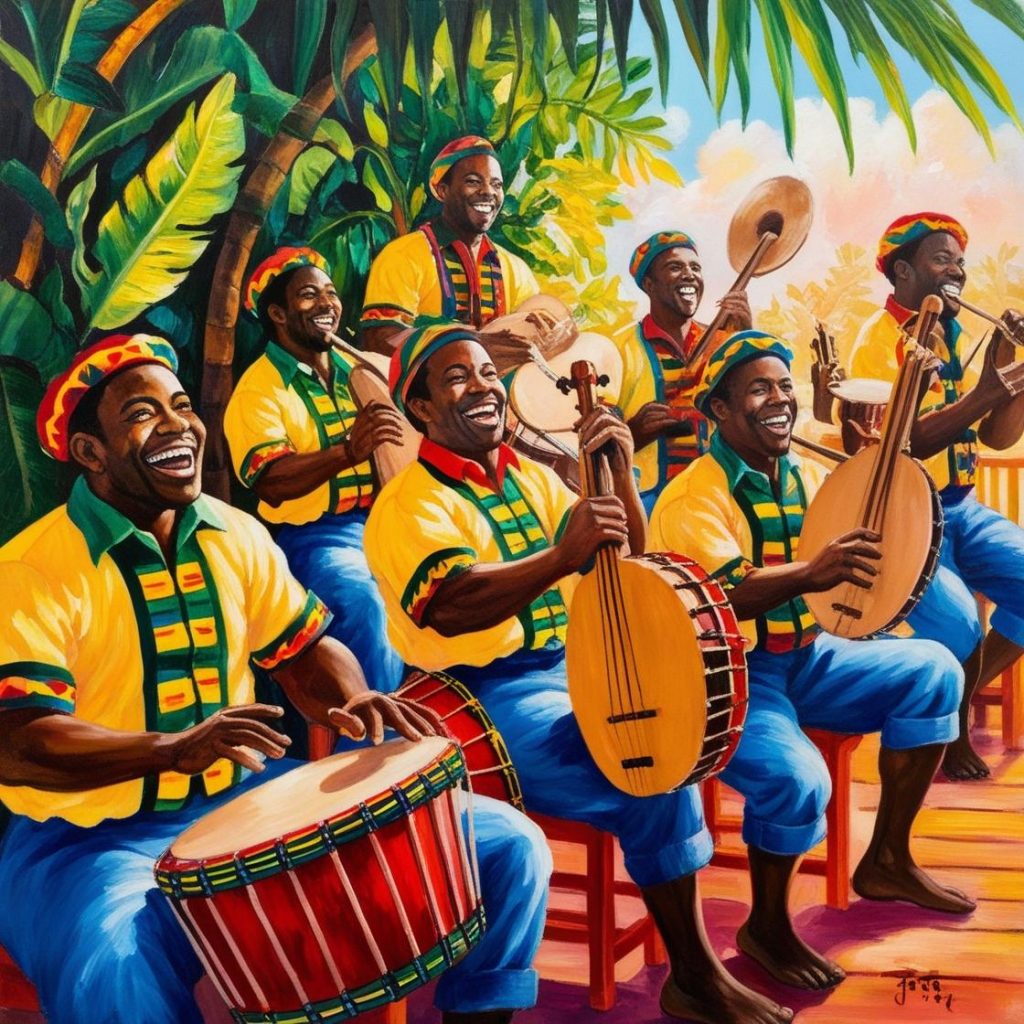Mento Music
Mento Music: One of Jamaican foundation music genre

Jamaica’s Mento Music
Mento music is a genre that originated in Jamaica in the early 20th century. It is a fusion of African and European musical styles, with influences from calypso, folk, and jazz. Mento music is characterized by its upbeat tempo, syncopated rhythms, and use of acoustic instruments such as the banjo, guitar, and hand drums.
To create a mento song, the first step is to come up with a catchy melody. This can be done on any instrument, but it is common to use a banjo or guitar. Next, the lyrics are written, often with a humorous or lighthearted tone. The lyrics may tell a story or convey a social commentary. Once the melody and lyrics are in place, the song can be arranged for a band or ensemble.
Mento music was created in Jamaica in the early 20th century, but its roots can be traced back to the African music brought over by slaves. Mento was popular in Jamaica during the 1950s and 1960s, before being overshadowed by reggae music. Mento music is still played in Jamaica today, particularly at tourist destinations.

Mento Band
The origins of mento music can be traced back to the rural areas of Jamaica, where it was played at weddings, funerals, and other social gatherings. Mento music was also popular in the urban areas, particularly in Kingston, where it was played in clubs and dance halls.
There is no one person who can be credited with creating mento music, as it was a product of the fusion of African and European musical styles in Jamaica. However, some of the most notable early mento musicians include Count Lasher, Lord Flea, and Laurel Aitken.
Mento was created as a way for Jamaicans to express themselves musically. It was also a way to preserve African cultural traditions in the face of European colonialism. Mento was often used to convey social commentary and political messages.
Some of the most notable mento musicians and producers include Count Lasher, Lord Flea, Laurel Aitken, and Stanley Motta. These musicians helped to popularize mento music in Jamaica and around the world.
The impact of mento has been felt globally, particularly in the Caribbean and in countries with large Jamaican communities, such as the United States and the United Kingdom. Mento music has influenced other genres, such as ska, rocksteady, and reggae.
The most popular mento song is “Day-O (The Banana Boat Song)”, made famous by Harry Belafonte in the 1950s. The song was originally a Jamaican folk song, and it has since become a staple of mento music.
In addition to influencing other music genres, mento music has also had a cultural impact. It has helped to preserve African cultural traditions in Jamaica and has contributed to the country’s rich musical heritage. Mento continues to be an important part of Jamaica’s cultural identity and musical legacy.
Mento is a genre of Jamaican folk music that originated in the early 20th century. It is characterized by its upbeat rhythms, use of banjos and other stringed instruments, and lyrics that often tell stories about everyday life in Jamaica. Mento music is considered to be one of the foundational genres of Jamaican music, and it has influenced other genres such as ska, reggae, and dancehall.
To create or produce a mento song, one must first start with a catchy rhythm. This often involves using instruments such as the banjo, guitar, and maracas to create an upbeat and lively sound. The lyrics are also an important part of a mento song, and they often tell stories about Jamaican life, such as love, work, and social issues. The key is to keep the music and lyrics simple, so that they are easy to sing and remember.
Mento was created in Jamaica in the early 20th century, and it was popularized by musicians who played in local dance halls and on the streets. It was originally played on acoustic instruments, and it drew on a variety of musical influences, including African, European, and American music. Mento music was especially popular in the 1940s and 1950s, and it was often played at parties, weddings, and other social events.
Mento originated in Jamaica, and it was primarily played by local musicians who lived in rural areas. However, it soon spread to urban areas such as Kingston, where it became popular among the working class. Mento music was also influenced by other genres such as calypso and American jazz, which were popular in Jamaica at the time.
One of the most notable figures in the history of mento is Count Lasher, who is considered to be the father of modern mento. He was a singer, songwriter, and musician who played the banjo and guitar, and he was known for his humorous and socially conscious lyrics. Other notable mento musicians and producers include Stanley Beckford, Lord Flea, and Laurel Aitken.
The impact of mento globally cannot be overstated. Its catchy rhythms and lively lyrics have influenced other genres of Jamaican music, including ska, reggae, and dancehall. Mento music has also been popularized around the world, and it has been played by musicians in countries such as the United States, the United Kingdom, and Japan.
The most popular mento song is “Day-O (The Banana Boat Song),” which was made famous by Harry Belafonte in the 1950s. The song tells the story of Jamaican dock workers who are loading bananas onto a ship, and it features a catchy call-and-response chorus that has become iconic in popular culture.
Mento have heavily on the rhythms and melodies of mento music. Reggae music, which became popular in Jamaica in the 1960s, also incorporates mento rhythms and instrumentation. Dancehall, which emerged in Jamaica in the 1980s, features a fast-paced electronic sound that is influenced by mento’s upbeat rhythms.
